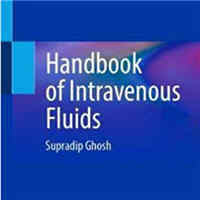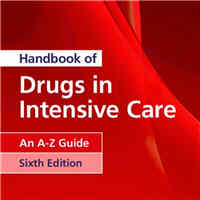Tag: hypotension
Clinical Cases in Critical Care
In Clinical Cases in Critical Care, the authors explore core clinical topics and basic sciences in a practical and realistic way, and include comprehensive discussions focusing on critically unwell patients with a variety... read more

Improving Intubation Performance with Airway Registries
Airway registries are used as a crucial tool to monitor and improve intubation performance and patient care. ED airway registries inform and document the efficacy of quality improvement initiatives to improve intubation performance... read more
Dexmedetomidine, Almost As Many Uses As There Are Letters
There is literature to support the use of dexmedetomidine in patients with sympathomimetic toxidrome. It may be a reasonable approach to utilize Dex, with or without a bolus, while closely monitoring these patients in an... read more
The CLOVERS Trial: Does Nothing Matter in Sepsis?
The CLOVERS trials is an open label RCT that did not demonstrate any difference (beneficial or harmful) from using a restrictive fluid strategy over a liberal fluid strategy in sepsis-induced hypotension. Do whatever... read more
The effect of a multi-faceted quality improvement program on paramedic intubation success in the critical care transport environment
A multi-faceted advanced airway management (AAM) quality improvement program (QIP) resulted in statistically significant increase in intubation first pass success rates (FPS) rates and a non-significant improvement in DASH-1A... read more
Improving Outcomes in Patients with Difficult Airways
Evidence indicates that the airway community has successfully conquered the anatomically difficult airway, as these patients are managed safely with a low incidence of morbidity and mortality. In contrast, the literature... read more
Critically Unwell Child Intubation in the ED
Intubation in the pediatric emergency department is scary stuff. For critically ill children who require intubation, it is rarely practiced outside of the critical care unit. With the centralization of services there are... read more
Why Are We Still Talking about ICP and Ketamine?
A trauma patient required emergent intubation during a recent shift. The altered patient was suspected of having an intracranial bleed. My resident was concerned about rapid onset of hypoxia and other internal injuries causing... read more
Ventriculo-Arterial Coupling Analysis Predicts the Hemodynamic Response to Norepinephrine in Hypotensive Postoperative Patients
In patients with arterial hypotension norepinephrine increased end-systolic ventricular elastance and arterial elastance. The effects of norepinephrine on stroke volume depend on baseline ventriculo-arterial coupling. Although... read more
Intraoperative Hypotension and AKI after Noncardiac Surgery in Infants and Children
In distinct contrast to adults, the authors did not find any association between intraoperative hypotension and postoperative renal injury. Avoiding short periods of hypotension should not be the clinician’s primary concern... read more
Ventilation in Patients with Intra-abdominal Hypertension
The incidence of intra-abdominal hypertension (IAH) is high and still underappreciated by critical care physicians throughout the world. One in four to one in three patients will have IAH on admission, while one out of... read more
The Importance of Accurate Glucose Monitoring in Critically Ill Patients
Critically ill patients are not found just in intensive care units, but throughout the hospital: emergency departments, post-anaesthesia care units, operating rooms, and many other environments now care for the critically... read more
Balanced Solution vs. 0.9% Saline Solution Fluid Treatment in Critically Ill Patients
Among critically ill patients requiring fluid challenges, use of a balanced solution compared with 0.9% saline solution did not significantly reduce 90-day mortality. The findings do not support the use of this balanced... read more
Computer-assisted Individualized Hemodynamic Management Reduces Intraoperative Hypotension
In patients having intermediate- to high-risk surgery, computer-assisted individualized hemodynamic management significantly reduces intraoperative hypotension compared to a manually controlled goal-directed approach. All... read more
Cerebral Oxygen Saturation and Autoregulation During Hypotension in Extremely Preterm Infants
Dopamine had no effect on rScO2 compared to placebo in hypotensive infants. Hypotension and cerebral hypoxia are associated with early intraventricular hemorrhage or death. Prospective cohort study of blinded rScO2 measurements... read more
Cardiorespiratory Compromise in the Perioperative Environment
Perioperative cardiorespiratory compromise is common and goes largely undetected. Predictive cardiorespiratory indices can help in early detection of harmful deviations and guide preemptive treatment. Using continuous... read more
Safety of RSI in an Emergency Training Network
Implementation of an evidence-based care bundle and audit of practice has created a safe environment for trainees to learn the core critical care skill of Rapid sequence intubation (RSI). In our setting, checklist use was... read more
Subtle Presentations of Shock in the ED Setting
The patient was a 2-year-old female with a history of allergy to peanuts who was brought to the emergency department by her mother because of a complaint of allergic reaction. Twenty minutes prior to arrival, the patient... read more
Artificial Intelligence in Telemetry: What Clinicians Should Know
Advances in artificial intelligence are beginning to unlock the potential of telemetry data to directly inform diagnosis and personalized treatment. We can see hints of this in considering the case above. Is a second... read more
Clinical Evaluation of a High-fidelity Upper Arm Cuff to Measure Arterial Blood Pressure during Noncardiac Surgery
The new high-fidelity upper arm cuff method met the current international standards in terms of accuracy and precision. It was also very accurate to track changes in blood pressure and reliably detect severe hypotension during... read more
COVID-19: A Critical Analysis of Chloroquine and Hydroxychloroquine Clinical Pharmacology
Chloroquine and hydroxychloroquine have been used for over 60 years in the treatment of malaria, amoebic liver abscess, and several rheumatological conditions, but their clinical pharmacology is not well understood. COVID-19... read more
Prehospital On-scene Anesthetist Treating Severe TBI Patients is Associated with Lower Mortality and Better Neurological Outcome
Patients with isolated traumatic brain injury (TBI) are likely to benefit from effective prehospital care to prevent secondary brain injury. Only a few studies have focused on the impact of advanced interventions in TBI... read more









